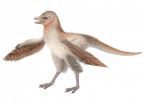(Press-News.org) DETROIT – Here's a wake-up call for snorers: Snoring may put you at a greater risk than those who are overweight, smoke or have high cholesterol to have thickening or abnormalities in the carotid artery, according to researchers at Henry Ford Hospital in Detroit.
The increased thickening in the lining of the two large blood vessels that supply the brain with oxygenated blood is a precursor to atherosclerosis, a hardening of the arteries responsible for many vascular diseases.
"Snoring is more than a bedtime annoyance and it shouldn't be ignored. Patients need to seek treatment in the same way they would if they had sleep apnea, high blood pressure or other risk factors for cardiovascular disease," says lead study author Robert Deeb, M.D., with the Department of Otolaryngology-Head & Neck Surgery at Henry Ford.
"Our study adds to the growing body of evidence suggesting that isolated snoring may not be as benign as first suspected. So instead of kicking your snoring bed partner out of the room or spending sleepless nights elbowing him or her, seek out medical treatment for the snorer."
The study reveals changes in the carotid artery with snorers – even for those without sleep apnea – likely due to the trauma and subsequent inflammation caused by the vibrations of snoring.
Study results will be presented Friday at the 2013 Combined Sections Meeting of the Triological Society in Scottsdale, Ariz. It has been submitted to The Laryngoscope journal for publication.
Obstructive sleep apnea (OSA) – a sleep disorder that occurs due to the collapse of the airway in the throat during sleep and causes loud snoring and periodic pauses in breathing – has long been linked to cardiovascular disease, along with a host of other serious health issues.
But the risk for cardiovascular disease may actually begin with snoring, long before it becomes OSA. Until now, there was little evidence in humans to show a similar connection between snoring and cardiovascular risk.
For the Henry Ford study, Dr. Deeb and senior study author Kathleen Yaremchuk, M.D., reviewed data for 913 patients who had been evaluated by the institution's sleep center.
Patients, ages 18-50, who had participated in a diagnostic sleep study between December 2006 and January 2012 were included in the study. None of the participants had sleep apnea.
In all, 54 patients completed the snore outcomes survey regarding their snoring habits, as well as underwent a carotid artery duplex ultrasound to measure the intima-media thickness of the carotid arteries.
Carotid intima-media thickness, a measurement of the thickness of the innermost two layers of the arterial wall, may be used to detect the presence and to track the progression of atherosclerotic disease. Intima-media thickness is the first sign of carotid artery disease.
Compared to non-snorers, snorers were found to have a significantly greater intima-media thickness of the carotid arteries, the study finds.
The study also revealed no statistically significant differences in intima-media thickness for patients with or without some of the traditional risk factors for cardiovascular disease – smoking, diabetes, hypertension or hypercholesterolemia.
"Snoring is generally regarded as a cosmetic issue by health insurance, requiring significant out-of-pocket expenses by patients. We're hoping to change that thinking so patients can get the early treatment they need, before more serious health issues arise."
The Henry Ford research team plans to conduct another long-term study on this topic, particularly to determine if there's an increased incidence of cardiovascular events in patients who snore.
### Along with Drs. Deeb and Yaremchuk, Henry Ford study co-authors are Paul Judge, M.D.; Ed Peterson, Ph.D.; and Judith C. Lin, M.D.
Funding: Henry Ford Hospital
Don't ignore the snore: Snoring may be early sign of future health risks
2013-01-24
ELSE PRESS RELEASES FROM THIS DATE:
Can you 'train' yourself to have more willpower?
2013-01-24
PROVIDENCE, R.I. – You can train your body, your mind … and your willpower? That's according to a new study by researchers at The Miriam Hospital's Weight Control and Diabetes Research Center, who say that with a little practice, it may be possible to strengthen and improve your self-control – and lose more weight.
The Miriam research team found that individuals with more willpower – or self-control – lost more weight, were more physically active, consumed fewer calories from fat and had better attendance at weight loss group meetings. The same was true for participants ...
Grammar undercuts security of long computer passwords
2013-01-24
PITTSBURGH—When writing or speaking, good grammar helps people make themselves be understood. But when used to concoct a long computer password, grammar — good or bad — provides crucial hints that can help someone crack that password, researchers at Carnegie Mellon University have demonstrated.
A team led by Ashwini Rao, a software engineering Ph.D. student in the Institute for Software Research, developed a password-cracking algorithm that took into account grammar and tested it against 1,434 passwords containing 16 or more characters. The grammar-aware cracker surpassed ...
Neuroinflammation may be behind general-anesthesia-associated learning disabilities
2013-01-24
Several studies have found evidence that children who undergo repeated surgical operations with general anesthesia before the age of 4 may be at an increased risk for learning disabilities. In the March issue of Anesthesiology, Massachusetts General Hospital (MGH) researchers report an animal study indicating that several factors – age, the specific anesthetic agent used and the number of doses – combine to induce impairments in learning and memory accompanied by the inflammation of brain tissue. An accompanying paper from the same team finds that the offspring of mice ...
Urban metabolism for the urban century
2013-01-24
New Haven, Conn.–Like organisms, cities need energy, water, and nutrients, and they need to dispose of wastes and byproducts in ways that are viable and sustainable over the long run. This notion of "urban metabolism" is a model for looking systematically at the resources that flow into cities and the wastes and emissions that flow out from them—to understand the environmental impacts of cities and to highlight opportunities for efficiencies, improvements, and transformation.
Yale University's Journal of Industrial Ecology is pleased to announce a special issue on Sustainable ...
New dinosaur fossil challenges bird evolution theory
2013-01-24
The discovery of a new bird-like dinosaur from the Jurassic period challenges widely accepted theories on the origin of flight.
Co-authored by Dr Gareth Dyke, Senior Lecturer in Vertebrate Palaeontology at the University of Southampton, the paper describes a new feathered dinosaur about 30 cm in length which pre-dates bird-like dinosaurs that birds were long thought to have evolved from.
Over many years, it has become accepted among palaeontologists that birds evolved from a group of dinosaurs called theropods from the Early Cretaceous period of Earth's history, around ...
Sun shoots out 2 coronal mass ejections
2013-01-24
VIDEO:
This movie shows two coronal mass ejections (CMEs) erupting from the sun on Jan. 23, 2013. The first was not directed at Earth; the second one is, but is not...
Click here for more information.
On Jan. 23, 2013, at 9:55 a.m. EST, the sun erupted with an Earth-directed coronal mass ejection, or CME. Experimental NASA research models, based on observations from the Solar Terrestrial Relations Observatory (STEREO) and ESA/NASA's Solar and Heliospheric Observatory, show ...
Valuing nature is not enough
2013-01-24
Is it possible to put a price tag on the natural world? A researcher at The University of Nottingham has been examining the rise of a new concept — ecosystem services — to describe the multitude of resources supplied to us by Mother Nature.
Academic Dr Marion Potschin, of the University's Centre for Environmental Management, is among an international team of researchers who have been investigating the ethical considerations of this new concept, which some have argued turns nature into a 'commodity'.
In a paper published in the journal BioScience, Dr Potschin and her ...
Cells 'flock' to heal wounds
2013-01-24
Like flocks of birds, cells coordinate their motions as they race to cover and ultimately heal wounds to the skin. How that happens is a little less of a mystery today.
Researchers once thought only the cells at the edge of a growing patch of wounded skin were actively moving while dividing cells passively filled in the middle. But that's only part of the picture. Rice University physicist Herbert Levine and his colleagues have discovered that the process works much more efficiently if highly activated cells in every part of the patch exert force as they pull their neighbors ...
UCI neuroscientists create fiber-optic method of arresting epileptic seizures
2013-01-24
Irvine, Calif., Jan. 24, 2013 — UC Irvine neuroscientists have developed a way to stop epileptic seizures with fiber-optic light signals, heralding a novel opportunity to treat the most severe manifestations of the brain disorder.
Using a mouse model of temporal lobe epilepsy, Ivan Soltesz, Chancellor's Professor and chair of anatomy & neurobiology, and colleagues created an EEG-based computer system that activates hair-thin optical strands implanted in the brain when it detects a real-time seizure.
These fibers subsequently "turn on" specially expressed, light-sensitive ...
Mouse menopause model sheds light on UTIs in post-menopausal women
2013-01-24
Researchers from Washington University School of Medicine, St. Louis, show that reservoirs of uropathogenic E. coli within the bladder exist in higher numbers post-menopause than pre-menopause in a mouse model, a finding that could help explain the greater prevalence of urinary tract infections in post-menopausal women. They also found that estrogen supplementation reduced the numbers of such reservoirs dramatically. The research was published online ahead of print in the journal Infection and Immunity.
Urinary tract infections (UTIs) afflict an estimated 13 million ...

